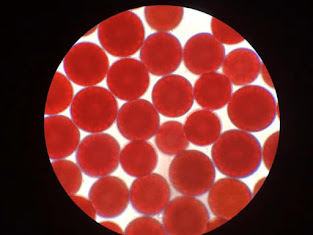As soon as winter comes, dear country, do healthy dishes full of energy start to be made all over the subcontinent? These dishes use a special ingredient called flower butter to get energy. This flower is so nutritious that it is so full of healthy ingredients that it can be called a superfood.
It contains protein, prebiotics, calcium, potassium, magnesium and steel, as well as many other micronutrients that reduce the effects of time-consuming strokes on our bodies, eliminating the germs that spread disease And are helpful in boosting our immune system. The use of flowers in energy-rich foods seems to be a very logical process that has been going on in this region for centuries.
Fox nuts are the seeds of a plant that grows in water similar to the flowering makhana lily. They bloom like corn by roasting on fire. That is why they are called flower makhana. Around 25 billion rupees worth of flowers are grown and eaten annually worldwide. Eighty percent of this is produced by India. The remaining 20% is produced in Japan, Korea and China.

More than half of India's floriculture is produced in Bihar, where it is grown on an area of 50,000 acres. It is also cultivated in Bengal and Assam. Demand for this specialty has grown significantly as a result of recent corporate scandals. In view of this increased demand, an institution has been set up in India to increase its production which has been named as Center to Boost Makhana Cultivation. In addition, the Bihar Department of Agriculture and the Indian Council for Agricultural Research (ICAR) are working hard to increase flower production. Recently, ICAR scientists have developed a new variety of makhana which weighs up to 1500 kg per acre. The old varieties yielded 600 to 800 kg per acre.
India is introducing flower almond in the style of California almonds as a healthy food all over the world. In this regard, people related to the export of this agricultural commodity have started an introductory campaign on flower media on various media around the world. As a result, the demand for Indian food is increasing day by day in Europe, Canada and especially in the United States. In India, makhana is sold at three hundred to five hundred Indian rupees per kilogram, depending on the quality. In Pakistani rupees it is seven hundred to twelve hundred rupees per kg. While in Pakistan, since it is imported, its price is Rs. 2200 per kg or more.

It is necessary to keep standing water from one foot to five feet in the field for growing makhana. There are thousands of acres of land along the rivers in Pakistan where river water naturally accumulates for most of the year. Some time ago we agreed to go to Qadirabad Headworks. There stood miles and miles of water along the river in which the car lotus was on fire. All this land is suitable for cultivation. There are many low-lying areas where rainwater accumulates. In my humble opinion, butter can be cultivated in all these places.
Apart from all these, some time ago Agri Tourism Pakistan organized Sanghara Festival near Kamonki. There we observed that thousands of acres of common land had been watered to create exactly the same pattern as in the Makhana cultivation areas in the Indian state of Bihar. Seeing the cultivation of Sanghara in artificial lakes, it can be said with certainty that the cultivation of Makhana can be done successfully here.
The corn crop is sown in December. Cheese is planted first, just like the rice crop. The cheese is then transferred to standing water in February and March. Where this crop is ready in June-July. Rice can then be grown in the same field. Up to 40 kg seed is required for one acre. While the yield of new varieties ranges from twelve hundred to fifteen hundred kilos per acre.
If you imagine at least one thousand kilos, after drying and roasting, you will get five hundred kilos of ready-made makhana, the selling price of which in Pakistan is two hundred rupees. Even if you invest one thousand rupees in 22 hundred places, the total income is five lakh rupees per acre. Even if the cost is half, the profit can be many times more than all the crops grown in Pakistan.
It is hoped that after these submissions, some people involved in agriculture will experience the cultivation of makhana in Pakistan. If even a single brave soul cultivates on a canal, then everyone will be ready to see. So who will be the first drop of rain ..?






Comments
Post a Comment